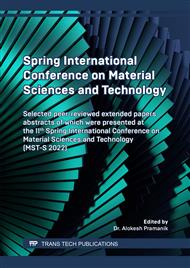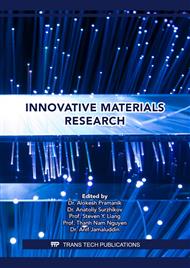p.129
p.139
p.151
p.157
p.165
p.177
p.183
p.189
p.201
Study on Microstructure and Mechanical Properties of Al0.5TiNbX0.5 High-Entropy Alloys
Abstract:
In order to explore the influence of V, Mo and Zr elements on Al0.5TiNb-based refractory high-entropy alloys. Three alloys Al0.5TiNbV0.5, Al0.5TiNbZr0.5 and Al0.5TiNbMo0.5 were used as experimental materials in this paper. The phase structures, microstructures and mechanical properties of the three designed alloys were analyzed by using X-ray diffraction, optical Olympus metallographic microscope and mechanical performance testing. The results show that the three designed alloys are composed of BCC phase solid solution. There was no formation of intermetallic compounds. The yield strength of Al0.5TiNbZr0.5 and the compressive plastic strain of Al0.5TiNbV0.5 reached the maximum value of 1340 MPa and 7.86%, respectively. This might be attributed to four effects of high-entropy alloys and the strengthening effect of dendrites. The dendrite content of Al0.5TiNbZr0.5, Al0.5TiNbMo0.5 and Al0.5TiNbV0.5 decreases successively. There are coarse grain boundaries in the microstructure of Al0.5TiNbV0.5, which contribute to improvement of compressive plasticity.
Info:
Periodical:
Pages:
183-188
Citation:
Online since:
June 2022
Authors:
Price:
Сopyright:
© 2022 Trans Tech Publications Ltd. All Rights Reserved
Share:
Citation:



